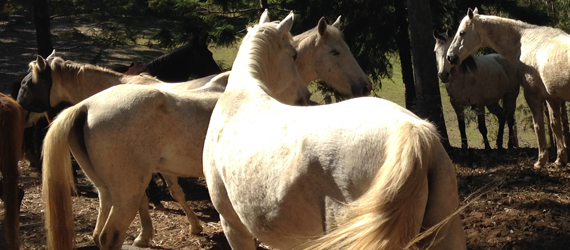Look at the horses around you. Do you believe that they’re thriving? Are their lives the healthiest, richest and most fulfilling they could be – from a horse’s point of view?
OK – so how would you know?
Recently, I heard something that shook up my notions of how we look after our horses – in a good way. It confirmed my thoughts on why some ideas around horse care are good, and equally strengthened my convictions about why some others are wrong.
To cut to the chase, I found myself at an animal behavior conference, listening to a remarkable talk. In just 12 short minutes, I experienced my own work and that of many others dedicated to improving horses’ lives placed in a strong and meaningful context.
The speaker identified just why the Five Freedoms commonly used in animal welfare advocacy are no longer enough to guide us in how we treat our fellow creatures.
Being fundamental and broad, the freedoms – from hunger and thirst, from discomfort, from pain, injury or disease, to express normal behaviour, and from fear and distress – are today more associated with outright cruelty cases, rather than animals that are doing not so badly, but could maybe do better in our care.
Instead, this speaker offered a further 5 points to help us ensure that our animals – including our horses – not only avoid cruelty, but have the opportunity to positively thrive under our care.
Original article (c) Jane Clothier, https://thehorsesback.com No reproduction without permission.
The 5 Opportunities to Thrive
The talk, From Prevention of Cruelty to Optimizing Welfare, was presented by Greg Vicino, Head of Welfare at San Diego Zoo. More on Greg soon, but first, here are the five Opportunities to Thrive that he outlined.
1. Opportunity for a well-balanced diet Fresh water and a suitable, species specific diet will be provided in a way that ensures full health and vigor, both behaviorally and physically.
2. Opportunity to self-maintain An appropriate environment including shelter and species specific substrates that encourage opportunities to self-maintain.
3. Opportunity for optimal health Rapid diagnosis and treatment of injury or disease while providing supportive environments that increase the likelihood of healthy individuals.
4. Opportunity to express species-specific behavior Quality spaces and appropriate social groupings will be provided that encourage species specific behaviors at natural frequencies and of appropriate diversity while meeting social and developmental needs.
5. Opportunities for choice and control Providing conditions in which animals can exercise control and make choices to avoid suffering and distress, and make behavior meaningful.
Now published by the San Diego team: Greggor, Alison L et al. “Animal Welfare in Conservation Breeding: Applications and Challenges.” Frontiers in veterinary science vol. 5 323. 18 Dec. 2018
How well are we doing with our horses?
Do those make you think at all? They do me… thoughts have flooded in and continue to do so, especially when I talk to other equine care professionals.
In some ways, our horses share more with captive animals than the agricultural livestock they live closely with. Retaining many powerful characteristics of the wild, our horses are kept in areas many times smaller than their previous wild habitats (in evolutionary terms), with the subsequent lack of behavioral freedoms that come with that.
“We use these guiding principles for assessment…. The Opportunities are a lens we look through when evaluating an animal group for optimal welfare.” Greg Vicino
OK. so let’s take a closer look.
The Horse’s Opportunity for a Well Balanced Diet
How about feeding in a way that ensures full heath and vigor, both behaviorally and physically? So many owners associate feeding with showing love, rather than respect for the needs of another species.
We have feed that looks like muesli and makes us go ‘yummy’. We have baled forage that the horses gobble up, yet contributes to laminitis, because it’s so full of carbs.
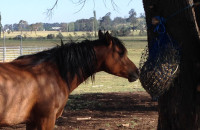
And as Greg said, in a statement that made me sit right up, “It’s not just what you eat, but how you eat it”
Yes, we can take it still further. Small hole haynets moderate intake, while keeping the hind gut busy.
What’s more, the weekend after the conference, I found myself listening again to Sharon May-Davis, as she described her ‘hay high’ practice of using haynet height to restore physical balance to the horse’s lower neck and forelimbs.
The Horse’s Opportunity to Self Maintain
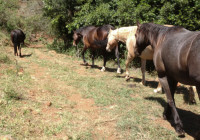
Some correlations are more obvious. You see, Greg Vicino’s full position is Associate Curator of Elephants and Welfare at San Diego Zoo.
One example he gave is that of providing varied sub-strata (ground surfaces) for elephants, so that they can maintain the soles and nails of their feet.
I know so many horses owners who are doing just that for their horses in their paddocks, so that unshod hooves can develop strength and balance.
And what about over-rugging?
The Horse’s Opportunity for Optimal Health
As a bodyworker and researcher into equine development problems, my feelings are probably predictable, and they may well be similar to your own. We all want our horses healthy and in fine form.

But where we have a problem is not with what we do think about, so much as what so often is not thought about.
Training methods, inappropriate riding style, too much exercise too soon… and I’m not talking about dressage, but everyday riders and owners here.
Thankfully, these subject areas that are so culturally entrenched are starting to open up more, particularly in areas such as saddle fit, head/neck position, and the ability of the horse to move in biomechanically sound ways.
The Horse’s Opportunity for Choice and Control
This I find quite moving… particularly the notion of making behavior meaningful. Think about it: what behavior may be meaningful to your horse? We are all curators of single or small groups of equines.
It’s easy for us to over-manage and micro-manage our horses’ lives, to the point where are few decisions left to make. We have many institutionalized animals that are denied individual expression.
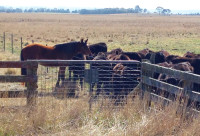
It goes without saying that we have to make decisions for our animals, and there are geographical, physical and financial limitations as to where and how they can be kept.
But that doesn’t mean we can’t do our best to make their lives interesting. In zoology, the term used is ‘enrichment’. It’s improving quality of life, beyond providing the essentials.
It’s about actively getting the most from life, not just avoiding negative states. So that’s different places to eat, finding different ways to eat. Having varied experiences. To express and act upon curiosity, Scope for play, scope for company. Places to scratch, places to roll. Other horses to touch.
The Horse’s Opportunity to Express Species-Specific Behavior
The preferred system of a boarding establishment may make for easy management, but your horse may be being denied this opportunity.
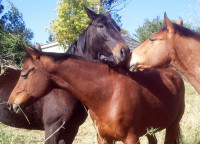
The horse kept in a small individual paddock is being denied self-expression, even when there’s an equine neighbor over the fence.
The constantly rugged horse is unable to roll and feel the texture of dirt in its coat. And what about ‘keep-em-clean’ hoods that hide the subtle facial expressions horses use to communicate with one another?
So, is your horse thriving?
We’re all on a learning curve with this one.
It’s true that many horses have it worse than our beloved animals at home, but that doesn’t mean that all our horses are getting enough of what they need for optimal quality of physical, mental and – yes – emotional life.
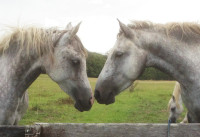
Likewise, the fact that other people are in a position to do it better than us – higher income and land ownership do open up more choices for animal management – doesn’t mean that we’re not getting a lot of it right (and, sometimes, better than those other owners).
So, let’s take this as encouragement to keep going and to keep striving, making improvements as we develop our understanding
of what it takes for our horses to thrive.
With thanks to Greg Vicino for allowing me to reproduce content from the forthcoming paper.
Please feel free to add your thoughts in the comments below.
The Opportunities to Thrive were created as part of a welfare management system at San Diego Zoo Global by Vicino and Miller, with the latter now at the Chicago Zoological Society – Brookfield Zoo.Greg A. Vicino, Associate Curator of Elephants and Animal Welfare, studied Biological Anthropology at UC Davis where he focused on non-human primate, husbandry, behavior, welfare, and socialization. Previously, he held positions as an Animal Care Supervisor of Primates for the San Diego Zoo, and interim Animal Services Manager Al AIn Zoo.
Mr. Vicino focuses on integrated management strategies, in which all animals receive the benefit of every specialty at each facility. With a heavy emphasis on feeding strategies, behavioral diversity, and species specific social behavior, he has championed the idea that every animal in our care should be given an Opportunity to Thrive.
Lance J. Miller, Ph.D., Senior Director of Animal Welfare Research, received his graduate training in Experimental Psychology from the University of Southern Mississippi. Previously, he held positions as a Research Manager at Disney’s Animal Kingdom and Scientist for the San Diego Zoo Institute for Conservation Research.
Dr. Miller focuses on animal welfare to help ensure that each individual animal within zoological facilities is thriving. He is currently a member of the Association of Zoos and Aquariums (AZA) Research and Technology Committee, Vice Chair of the AZA Animal Welfare Committee, and a steering committee member for the AZA Behavioral Scientific Advisory Group.
